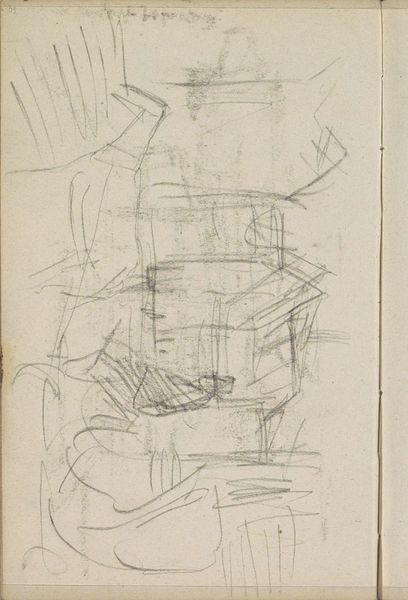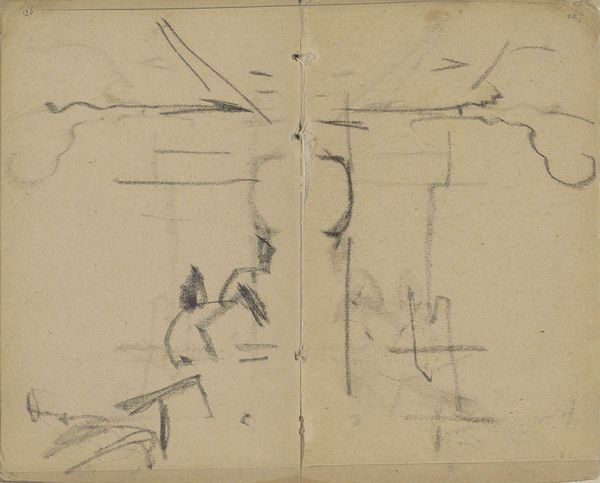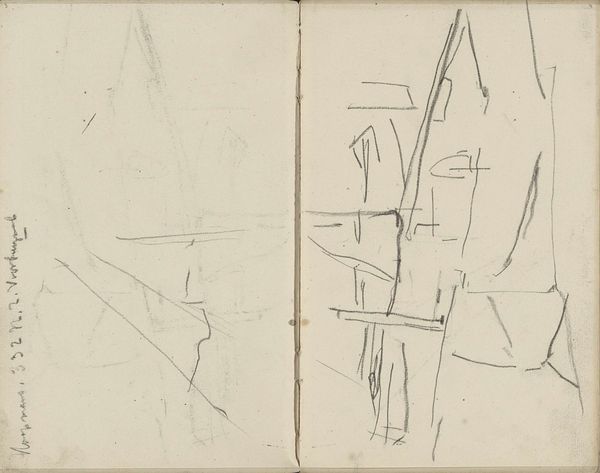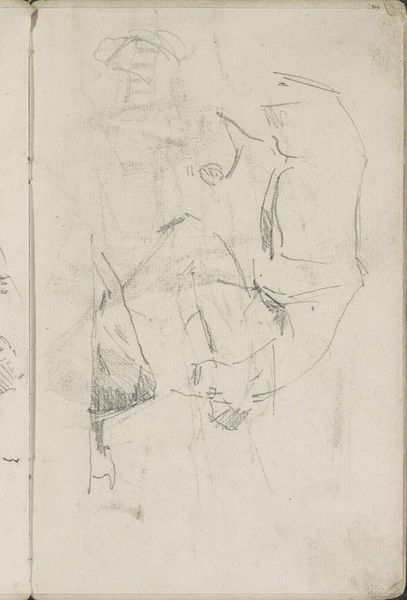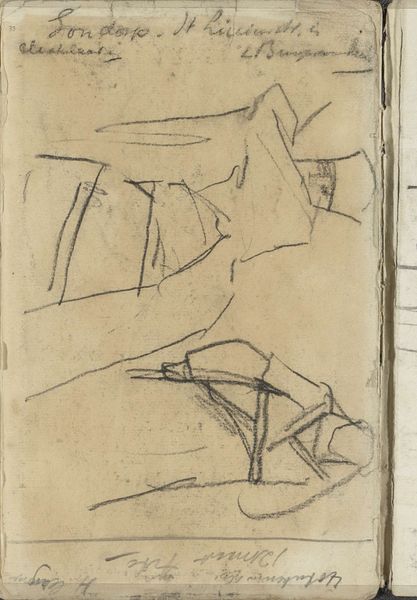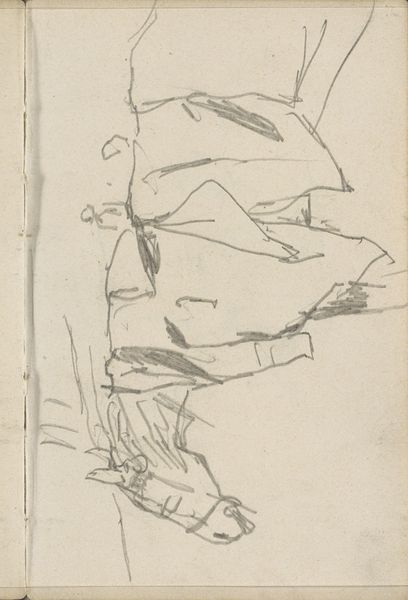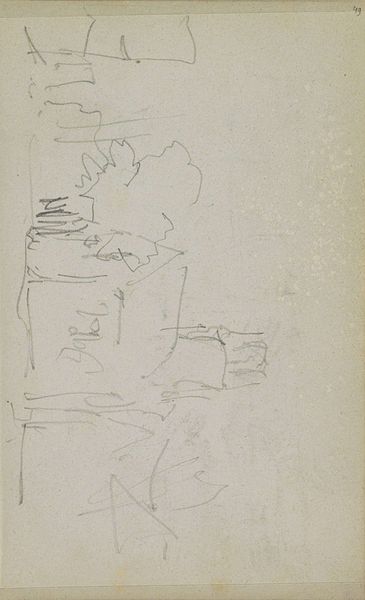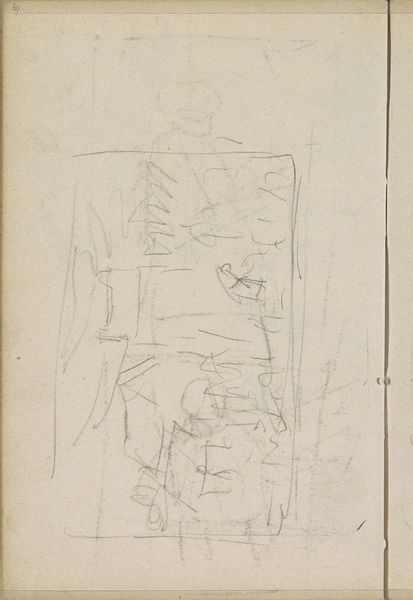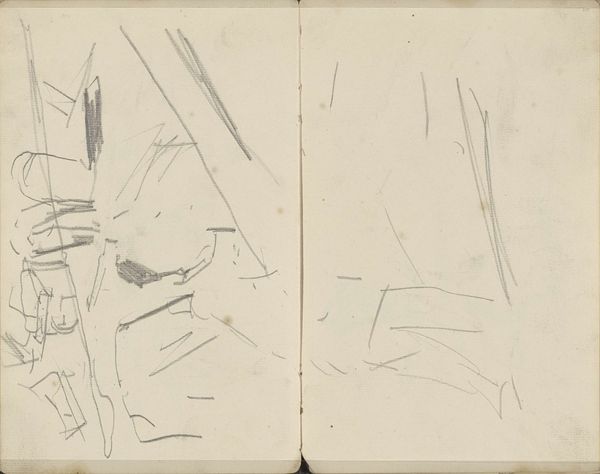
drawing, pencil
#
drawing
#
landscape
#
pencil
#
realism
Dimensions: 92 mm (height) x 174 mm (width) (bladmaal)
Curator: Immediately, the frantic energy of the marks suggests anxiety, perhaps reflecting broader social unease. Editor: This drawing, titled "Studies of Donkeys," dates to 1919 and was created by Niels Larsen Stevns. You'll find it in the collection of the SMK, the National Gallery of Denmark. It’s executed in pencil on paper, offering an interesting insight into the artist’s process. Curator: The artist’s process indeed is on full display. Look closely, and you'll observe how Stevns utilizes line weight and shading—the materiality of pencil on paper—to convey not just the form but also the weariness or stubbornness associated with these working animals. It seems he has not aimed to represent the subject through detail, rather capture the mood and utility of the animals, especially because the scene is situated in a rural landscape where donkeys likely symbolize hard work and perseverance in agriculture and transportation. Editor: Yes, considering the historical context of 1919, immediately after World War I, these studies might represent the rebuilding efforts in Denmark. Donkeys would have been essential for transportation and agricultural work. Stevns perhaps draws a comparison between human resilience and the endurance of these often-overlooked animals in times of societal rebuilding. He has numerous sketches of animals across his career; they likely provided vital labor during this post-war era. Curator: We also cannot dismiss the significance of drawing as an accessible medium, and also sketching specifically. A pencil and some paper becomes accessible at a low material cost compared to say painting on a large canvas. He makes visible this reliance in these images. Editor: This work being held in the Statens Museum for Kunst speaks volumes too. Its inclusion suggests that this humble study holds as much cultural importance as Stevns’ larger, public works. Its presence makes one question how artistic value is attributed to the artistic means of production versus artistic intention or content. Curator: Precisely, this quick, material approach in Stevns’ art is to bring the socio-economic labor of the animal kingdom to the fore of the drawing's potential reading. Editor: This conversation has expanded the context to create a richer understanding about the value and role of drawing during times of cultural upheaval, I will be lingering on this sketch a little longer to ruminate!
Comments
No comments
Be the first to comment and join the conversation on the ultimate creative platform.

